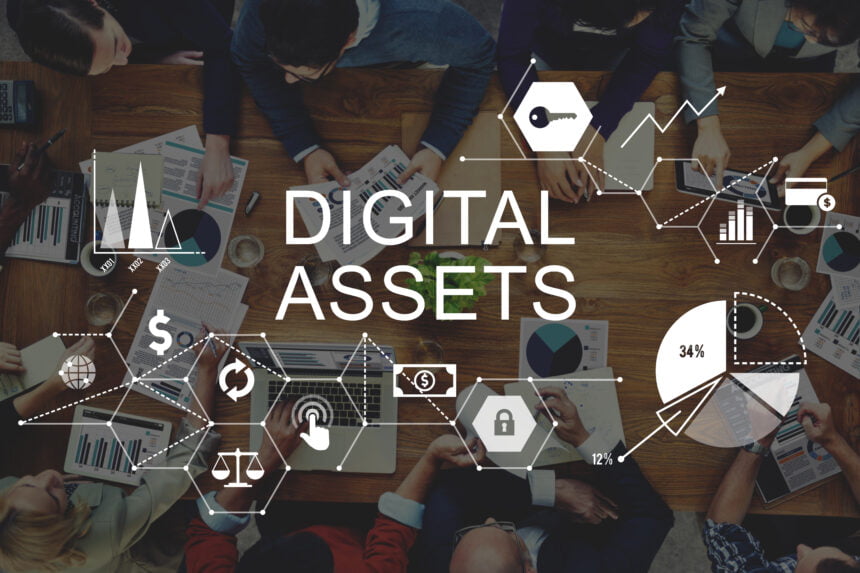Data analytics is the linchpin of digital business strategies in the 21st Century. Sensible companies need to know how to properly utilize data analytics to take full advantage of all of their digital resources. Not only that, fleet and asset tracking have been gaining much importance recently in order to leverage their maximum potential.
Digital resources must be monitored through digital asset management. Shrewd executives are finding new ways to explore the benefits of data analytics to improve their digital asset management strategies.
The Intersection Between Data Analytics and Digital Asset Management
Never before has there been a higher demand for digital solutions as it is now. Big data has played a key role in driving the future of this budding niche.
While Gartner reported on healthy and consistent growth in companies inquiring content operation technology from 2017 to 2020, the covid-19 pandemic has increased the speed of the technological development, moving entire industries toward more digital business models. They recognize that data is a vital organizational asset and are using it accordingly.
Several businesses have needed to adjust their work-habits to facilitate for remote work. According to Deloitte, some of these adjustments are likely to be (in part) permanent and will demand companies to invest in appropriate technologies, like digital devices, virtual collaboration tools, and software supporting dynamic work locations, in order to succeed. The pandemic has also pushed consumers towards online channels, with a global average of 58% of customer interactions being partially or fully digital as of July 2020, compared to 36% in December 2019. This rapid change in shopping and work habits will undoubtedly result in an increase in digital content, and the need for efficient management of it. Data analytics is going to be vital to make sure that these trends are properly monitored.
A Digital Asset Management (DAM) software is, for many businesses, a necessity to keep control of content and marketing material. However, while most marketing leaders either have access to this technology or plan on acquiring it, many of them are not realizing its full potential. As reported by Gartner in their 2020 market guide for Digital Asset Management, about three-quarters of marketing departments with access to a DAM only achieve low to moderate utilization of the software. This suggests that most marketing teams already have available technology to increase their productivity and Return on Investment further. So, how can they go about maximizing this potential?
The potential of a DAM
Digital Asset Management – or DAM – is a solution enabling businesses and organizations to efficiently store, manage, find, and share their digital content in one central hub. However, how this software is deployed varies and can result in marketing teams experiencing drastic differences in its ability to improve efficiency and overall performance.
If implemented in a good way, a DAM has the potential to help your team find the right files with attached information quickly. It can also automate several time-consuming tasks, increase the efficiency of other programs, and collaborate with stakeholders within one online space.
DAM and SaaS
Some marketers are merely use their DAM software to keep their files organized. However, most DAM providers also offer the possibility of storing content in the cloud. Not taking advantage of this is causing you to miss out on a great opportunity. While on-premise solutions work fine, many marketers will notice an increase in their overall efficiency when choosing a Software as a Service (SaaS) plan. There are several reasons for this, for instance, its ability to scale and update without manual work. Also, with the increase of remote work habits, storing assets in the cloud will enable marketers to easily work with their content regardless of where they are located and what devices they are using.
Workflow automation
In the FotoWare 2020 research of DAM industry trends, 48% stated workflow automation as a main priority. For marketers, there is a lot of time and effort to save by implementing automated workflows, and the opportunities are many. From executing approval processes to keeping track of license expiration dates, implementing workflows is a necessity in order to utilize the full potential of your digital investments.
DAM as a collaboration tool
If you are only using the DAM as a storage unit with metadata, your team will likely miss out on a lot of their DAMs potential. A DAM works excellent as a collaboration tool, both within your team, across departments, and even when working with externals. By using comments and annotations, teams can easily communicate on content. As mentioned earlier, approval processes can be automated, saving a lot of time related to internal communication.
Additionally, a DAM is a great tool when sharing files with externals or the public. For instance, by doing like the White House Historical Association and enabling a digital library, or by locating file-links in dynamic albums that can be easily shared with externals.
Key integrations
According to the 2020 Gartner report “Marketing Technology Drivers of Genius Brand Performance”, high performing brands are prioritizing independent software solutions over single-vendor suite integrations. Being bound to only a handful of vendors can hinder flexibility and investing in independent solutions will enable your team to get the exact functions you need. However, integrations between the different solutions are key for efficient work. This goes for DAM software as well, and in FotoWare, we offer a wide range of APIs in order to meet market demand. Particularly popular are our Adobe CC, and Microsoft Office plugins, enabling users to access their files directly within their chosen programs.
The future of your DAM software hinges on data analytics
Data analytics is changing the nature of business in countless ways. One of the biggest changes is due to the evolution of digital asset management technology.
In order to keep up with the drastically changing market and the increase in online content, every marketing team should utilize the full potential of their DAM software. By evaluating your DAM, and how it is currently used in your department, you’ll be able to locate the areas where you can further streamline your content management. Be it in terms of storage, workflows, collaboration, or integrations; it is essential to find these and make adjustments so that your DAM can be used throughout the entire lifecycle of your content.
You just need to use data analytics to its full capacity.










